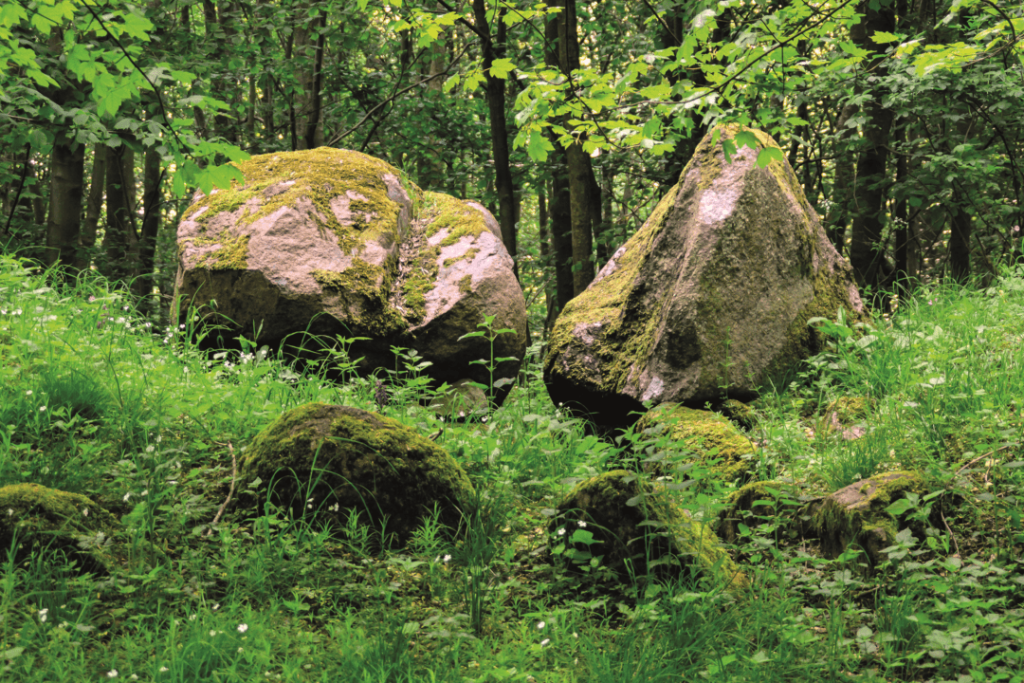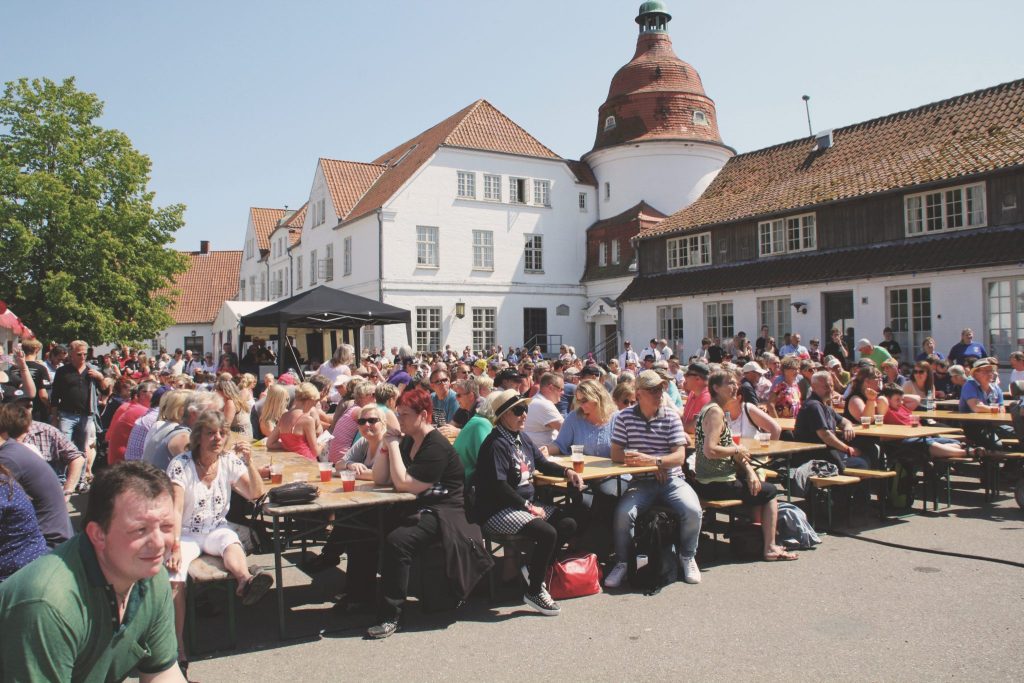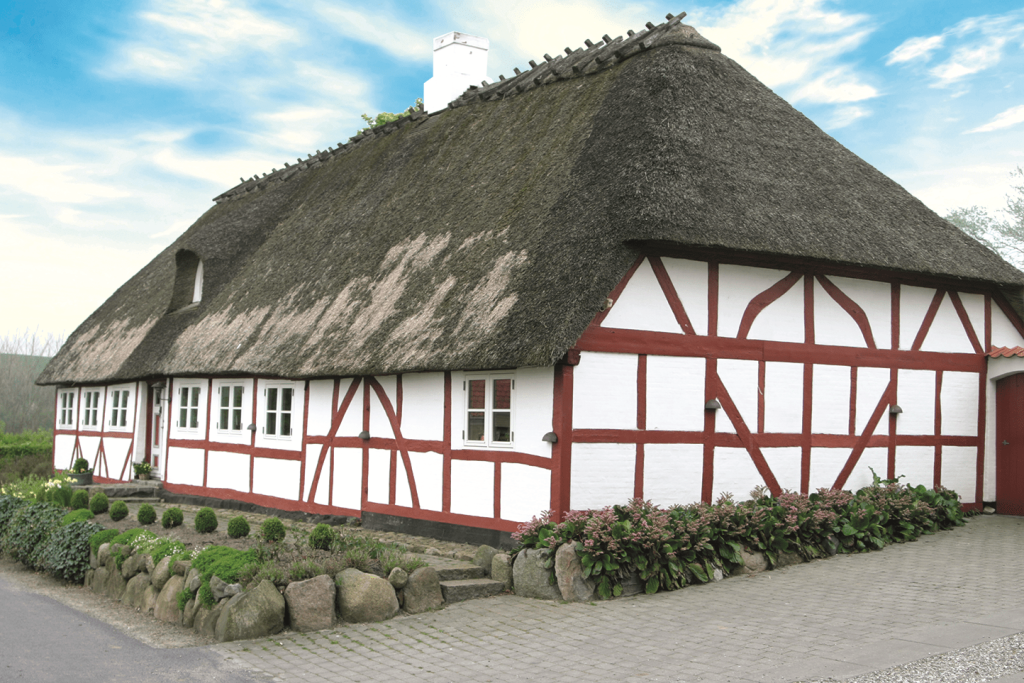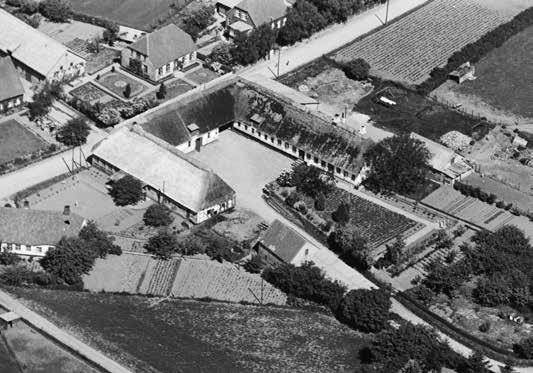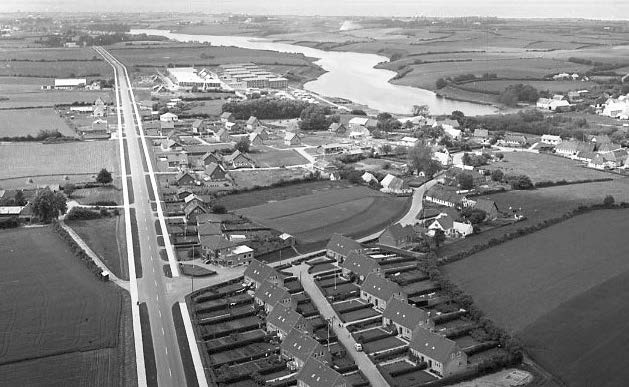Cultural history
The natural park's fertile ice age landscape has created the framework for settlements for more than 6000 years. Over time, residents adapted to climate change, sea level changes and political shifts of borders, times of crisis and growth. They ate seasonal greens, went hunting in the wild and fished in lakes, streams and the sea. They expanded and rebuilt. The nature park contains important stories about life and death. About survival, celebration and about togetherness. Tales are told from the landscape, country gardens, fences, the bridges, castles, pump houses, dairies and schools. All these stories have helped to delimit the nature park in relation to the area's cultural heritage.
Loose finds and several burial mounds in the area testify that the area was inhabited in both the Stone Age, Bronze Age, Iron Age and Viking Age. At Farresdam, Dyvig and Mjels Vig, place names, grave finds and artefacts found confirm that the area was also well visited in the Viking Age.
Ancient times
When the first reindeer hunters moved in the area, 12,000 years ago, the Arctic Ocean stood higher than it is now. The coastline changed throughout the Hunter Stone Age and many older settlements today are either flooded or difficult to find.
The earliest traces of humans are therefore from the last part of the Stone Age, about 6000-7000 years ago, when the sea level was much as it is today. At that time, people sailed in hollowed-out oak trunks, reminiscent of today's canoes and the area around the fjord was covered with forest with hunting prey such as red deer, roe deer and wild boar. Along the beach cliff at "Hesnæs" between Dyvig and Mjels Vig was one of these settlements. A kitchen manure has been found here that may have been used for many years and must have ceased at the end of the pea bull era, about 6000 years ago. Also along Oldenor's southern coastal slope were several settlements in the Stone Age. They may have been short-lived or seasonal campsites and can not be dated closer than the "Stone Age".
Middle Ages
From around the end of the Viking Age, people no longer settled on the coast. In many places, forests arose and the buildings in the Nature Park were characterized by the nearby villages inland: Nordborg (Købing), Mjels, Broballe and Oksbøl.
The earliest facilities for the city of Nordborg, the rampart Alsborg, were probably built by Sven Grathe in the year 1150 on four small islands. At the castle, an archaeological site has been proven, which is probably due to the fact that Nordborg Lake has been connected to the sea via the part of the tunnel valley that today forms Nordborg brook. During the castle's use, a lot of land was applied, so that today the rampart appears as an island with a moat. The castle has been burnt down twice and the current buildings were architect-designed during the German period in 1910.
Recent times
In Denmark, the agrarian reforms at the end of the 18th century meant that more farms moved out of the villages and were allotted plots of land in the open country. However, this did not happen to the same extent at Als. In the Nature Park's area, there are therefore only a few scattered emigrant farms in the landscape, and in the southern part towards Als Fjord, the landscape can be experienced almost deserted. During this period, from the 17th century until the middle of the 19th century, the typical Alsatian half-timbering developed. The buildings are most often characterized by a three-paneled gable with curved sloping braces. The timberwork is typically painted red with whitewashed boards. There are several preserved half-timbered houses in the nature park's villages. In the village of Holm just north of the nature park is the tavern, Jollmanns Gaard, which in 2o11 was restored to its original appearance with foundation support and which today can be visited as a museum.
The most significant cultural-historical traces in the landscape from recent times are the traces of drainage and damming of the dammed freshwater lakes, where pump houses and drainage canals can still be seen in the areas. In the middle of the 1800s, a group of farmers formed a lake partnership to drain the lakes into agricultural land. In 1849, work began on digging a drainage ditch by hand down through the two lakes and a land ditch north of Mjels lake and south of Bundsø.
The German period (1864-1920)
Germany's involvement of North Schleswig after the war in 1864 was of great importance for the development of Nordals. Economically, this meant only growth and stable outlets for agricultural products. Cattle breeding and grain breeding increased, and new farms and houses were built on an ongoing basis, such as farmhouses and farm buildings (Lo and Svinlai). The German era left its mark on the local building tradition and architectural appearance. Buildings from the German era can be recognized on patterned masonry, other brick joints and joint types or glazed bricks and bricks. The farm buildings on Nordals have long retained their traditional character with old Schleswig farm types, where housing and stables are in the same main length, including the so-called "hook farms". During this period, retirement homes became normal, which is still characteristic of many of the farms in Mjels, Broballe and Oksbøl.
Modern times
Developments after the First World War and reunification with Denmark meant an economic crisis on both sides of the border, and Nordals also had to see depopulation and economic stagnation. In the early 1930s, there was not much hope for population growth and growth, but one man came to have a decisive impact on the development of the area. In 1933, Mads Clausen began the development of Dansk Køleautomatik og Apparat-Fabrik, later Danfoss, in Elsmark near Havnbjerg. A new era had begun. The same year, the last train left Nordborg. In Oksbøl, traces can be seen of the former county railway, E Kleinbahn, and the old station building.
Most of the urban development in Nordborg and Havnbjerg in the 1940s and after was due to the relocation of workers to Danfoss, which in 1952 reached 1000 employees. There was a need for housing for the many employees, which is why Nordborg and the surrounding cooperative housing association was founded in collaboration with Danfoss in 1942. The district "Langesø" was the first planned, overall initiative planned for Danfoss by one architect and built on bare ground. in the years 1955-1965 with more than 600 homes.
